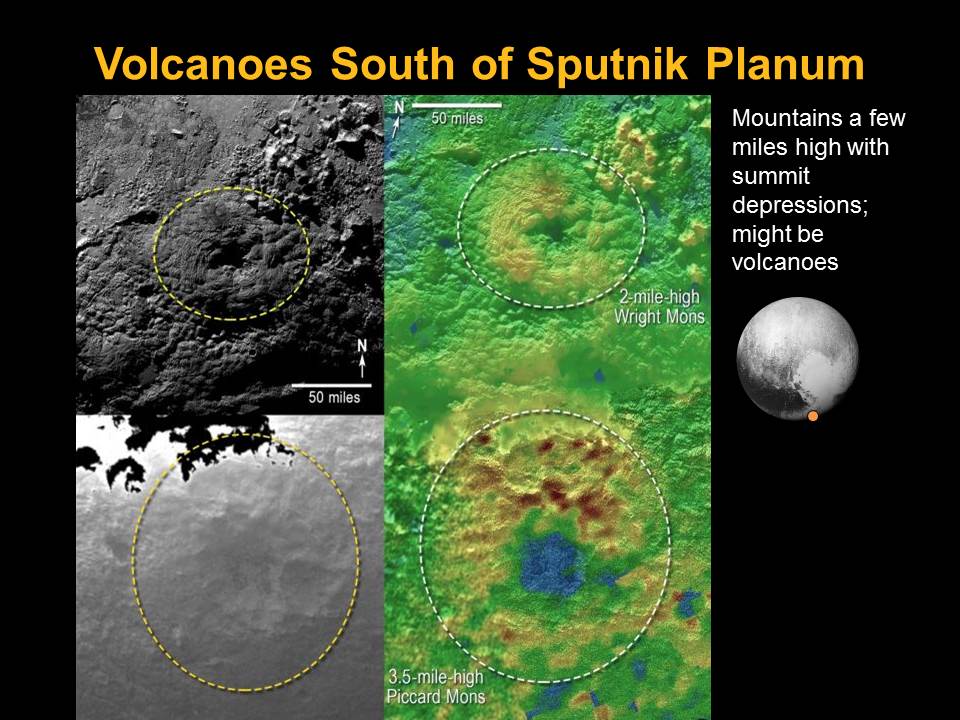
Pluto is a small, cold world, but it is also turning out to be one of the most fascinating places in our Solar System – as reported today at the American Astronomical Society’s Division for Planetary Sciences (DPS) meeting in National Harbor, Maryland, images and other data have revealed possible ice volcanoes and other surprisingly diverse geology as well as weirdly spinning moons.
“The New Horizons mission has taken what we thought we knew about Pluto and turned it upside down,” said Jim Green, director of planetary science at NASA Headquarters in Washington. “It’s why we explore – to satisfy our innate curiosity and answer deeper questions about how we got here and what lies beyond the next horizon.”
More than 50 reports are being presented on the exciting new discoveries being made, now four months since the flyby of Pluto and its moons by the New Horizons spacecraft. The findings were also published today in the journal Nature.
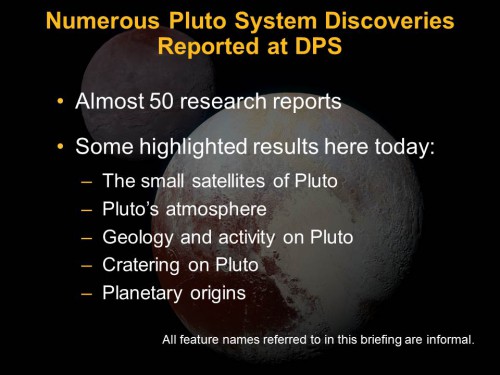
“It’s hard to imagine how rapidly our view of Pluto and its moons are evolving as new data stream in each week. As the discoveries pour in from those data, Pluto is becoming a star of the Solar System,” said mission Principal Investigator Alan Stern of the Southwest Research Institute, Boulder, Colorado. “Moreover, I’d wager that for most planetary scientists, any one or two of our latest major findings on one world would be considered astounding. To have them all is simply incredible.”
Ice Volcanoes?
One of the most interesting findings is that there may be cryovolcanoes, also known as ice volcanoes, on Pluto. Geologists on the New Horizons team combined images to make 3-D maps of Pluto’s surface, which provided evidence that two of the intriguing tall mountains might actually be cryovolcanoes. Such volcanoes, seen elsewhere in the Solar System like on Neptune’s moon Triton, are reminiscent of “ordinary” volcanoes, but erupt flowing ice instead of lava. The two candidates, Wright Mons and Piccard Mons, are tens of miles across and several miles tall. Wright Mons is located south of Sputnik Planum, and is about 100 miles (160 kilometers) wide and 13,000 feet (4 kilometers) high. The summit depression is approximately 35 miles (56 kilometers) across, with a distinctive hummocky texture on its sides. The rim of the summit depression also shows concentric fracturing.
“These are big mountains with a large hole in their summit, and on Earth that generally means one thing – a volcano,” said Oliver White, New Horizons postdoctoral researcher with NASA’s Ames Research Center, Moffett Field, California.
On Pluto, such volcanoes are thought to emit a melted slurry of water ice, nitrogen, ammonia or methane. According to White, this interpretation of the features is still tentative, but “if they are volcanic, then the summit depression would likely have formed via collapse as material is erupted from underneath. The strange hummocky texture of the mountain flanks may represent volcanic flows of some sort that have travelled down from the summit region and onto the plains beyond, but why they are hummocky, and what they are made of, we don’t yet know.”
“We found that a mantle containing a small amount of ammonia – which has been seen on the surface of bodies in the outer Solar System and plausibly condensed in the planets in this region – lowers the temperature required to achieve a Rayleigh number where convection occurs,” said Alex Trowbridge. “The ammonia lowers the viscosity of water ice by a factor of 100,000. This would allow for the geologically active and vigorous Pluto seen in the New Horizon images.”
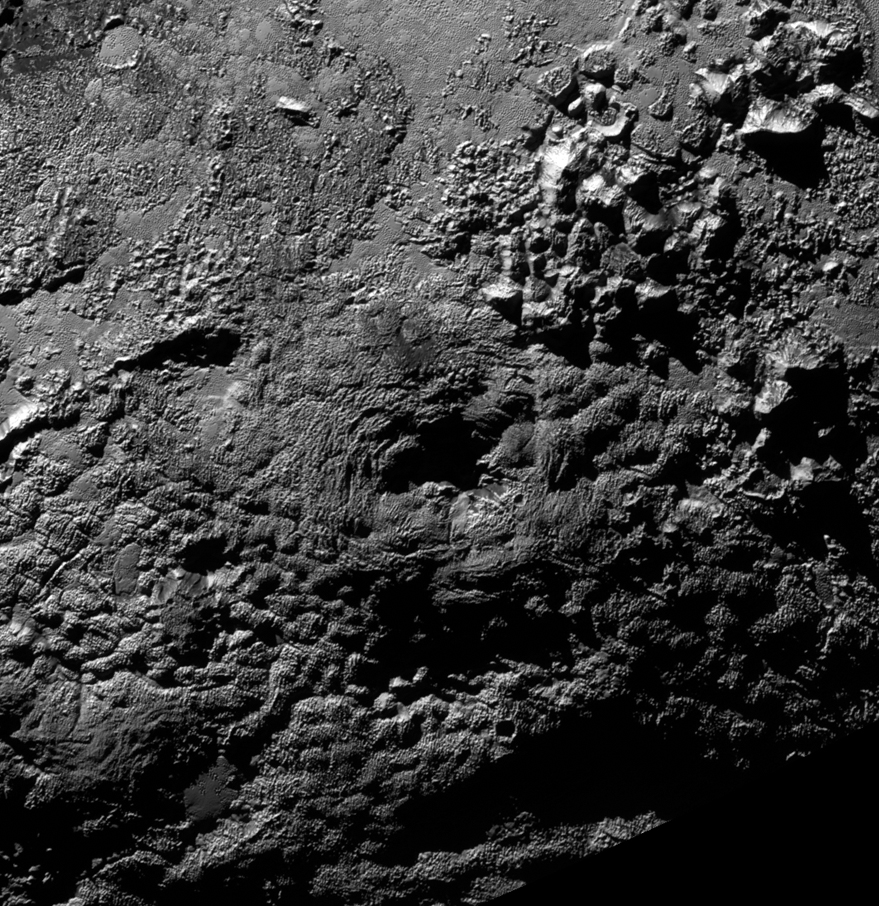
If confirmed, ice volcanoes on Pluto would be a surprising discovery that would help scientists better understand the geological and atmospheric history of Pluto.
As White also commented on Twitter, “If they really are volcanoes, it would be one of the most phenomenal discoveries of New Horizons.”
“After all, nothing like this has been seen in the deep outer Solar System,” said Jeffrey Moore, New Horizons Geology, Geophysics and Imaging team leader. “We’re not yet ready to announce we have found volcanic constructs at Pluto, but these sure look suspicious and we’re looking at them very closely,” noted Moore.
“If Pluto does indeed have cryovolcanoes, it suggests the volatile ices that coat its surface can flow relatively easily both at the surface and just below it,” said Robert Pappalardo, a planetary scientist at NASA’s Jet Propulsion Laboratory in Pasadena, California.
Indeed, such “flows” can be seen in the Sputnik Planum region, where smooth ice covers the surface and resembles glaciers on Earth. An ammonia-water “slurry” below the surface may feed the ice volcanoes.
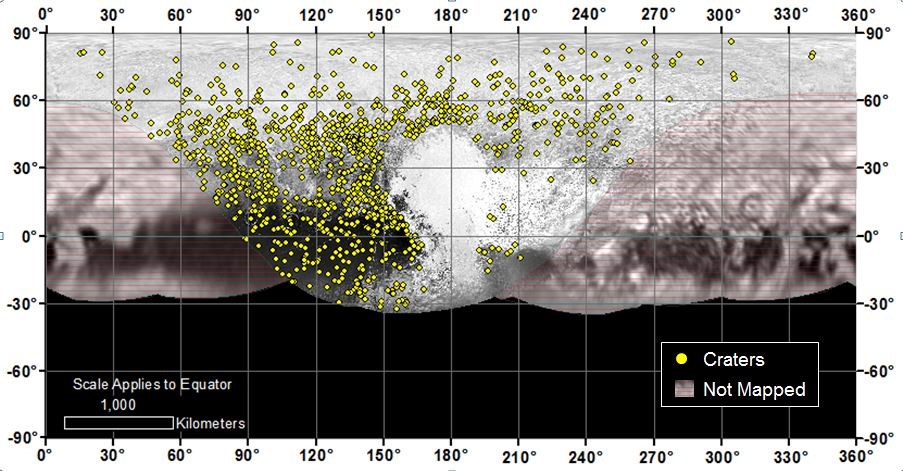
Geological History
The surface of Pluto also shows a long history of geological activity, from ancient cratered terrain to much younger, ice-covered plains. Sputnik Planum is completely crater-free and may have formed within the past 10 million years – very young, geologically-speaking. There are also other “middle-aged” terrains on Pluto, which indicate that Pluto has been geologically active for most of its history.
“We’ve mapped more than a thousand craters, which vary greatly in size and appearance,” said postdoctoral researcher Kelsi Singer, of the Southwest Research Institute (SwRI) in Boulder, Colorado. “Among other things, I expect cratering studies like these to give us important new insights into how this part of the solar system formed.”
The number of craters on Pluto and its moons can also provide clues as to the structure of the rest of the Kuiper Belt. The findings indicate that there may have been fewer smaller objects in the Kuiper Belt than previously thought. Instead, the lack of smaller supports other models theorizing that Kuiper Belt objects tens of miles across may have formed directly, at their current, or close to current, size, rather than accumulating from much smaller objects.
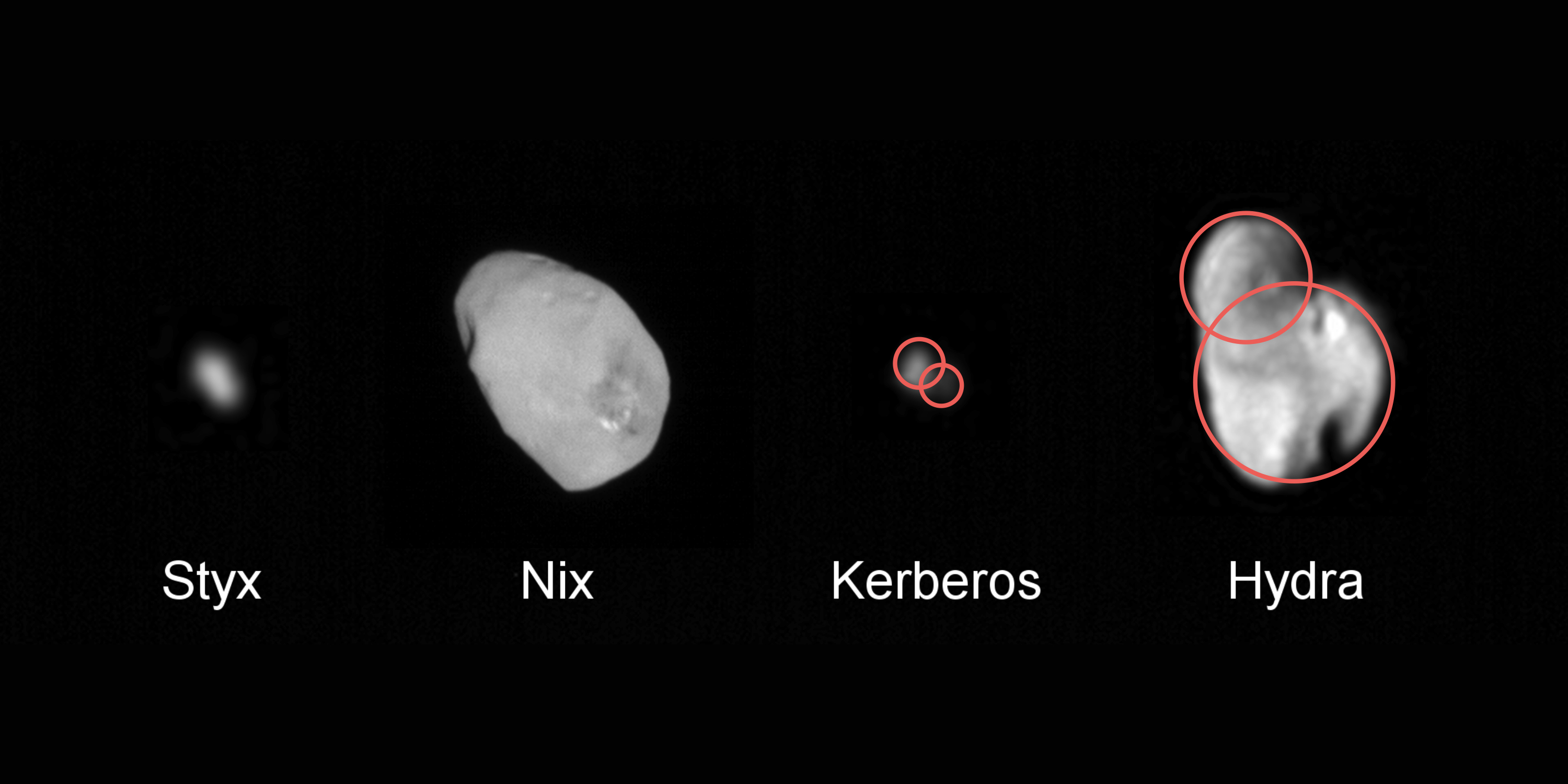
Odd Spinning Moons
Pluto’s five known moons are also an oddity; they have been found to be spinning much faster than expected. Most moons in the Solar System, including Earth’s moon, are in synchronous rotation with their planets (keeping one face toward the planet). But Pluto’s moons spin faster, with Hydra, the most distant moon from Pluto, rotating an unprecedented 89 times during a single lap. The spin rates may be chaotic (variable) due to Charon, the largest moon, exerting a strong torque that prevents each small moon from settling down into synchronous rotation.
“Pluto’s moons are behaving like spinning tops,” said co-investigator Mark Showalter of the SETI Institute in Mountain View, California.
Images from New Horizons also indicate that there may have been more moons in the past, with some of them merging together later on.
“We suspect from this that Pluto had more moons in the past, in the aftermath of the big impact that also created Charon,” said Showalter.
Cold, Compact Atmosphere
New data from New Horizons has also shown that Pluto’s thin upper atmosphere is even colder than expected and more compact than had been previously thought. The escape rate into space is also thousands of times slower than models had predicted, behaving more like the atmospheres of Earth and Mars, rather than comets.
All of the slides from the DPS meeting presentation can be seen here.
New Horizons is now currently en route to its next destination in the Kuiper Belt, the tiny world called 2014 MU69, which it is expected to reach on Jan. 1, 2019.
Follow our New Horizons mission page for regular updates.
Want to keep up-to-date with all things space? Be sure to “Like” AmericaSpace on Facebook and follow us on Twitter: @AmericaSpace
Missions » New Horizons »



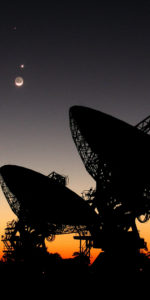
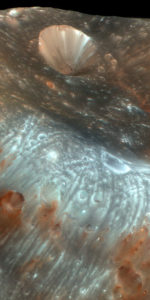
One Comment
One Ping
Pingback:Data From New Horizons Reveals More Water Ice on Pluto Than Previously Thought « AmericaSpace